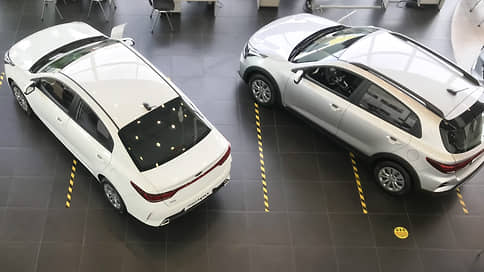South Korea tightens ban on car supplies to Russia
[ad_1]

South Korea has tightened the ban on car supplies to the Russian Federation – now it applies to all cars with an engine of more than 2 liters. Over the past year, more than 30 thousand Korean passenger cars, mostly used ones, were imported into the Russian Federation. According to Korean data, we are talking about supplies worth $651.6 million, of which vehicles worth more than $100 million would be banned. However, analysts believe that the restriction introduced by analogy with the sanctions of the EU and Japan will not significantly affect imports to the Russian Federation, which and so shrunk significantly after last year’s increase in the recycling fee and changes in the terms of its payment for individuals.
South Korea introduced new restrictions on the supply of cars to the Russian Federation from February 24. Instead of the previously existing price ceiling of $50 thousand, there will be a ban on the export of cars with an engine of more than 2 liters, according to a message from the country’s Ministry of Trade.
The sanctions actually repeat EU restrictions – in 2023, as part of the 11th package, the European Union banned the export of cars with an engine of 1.9 liters or more. Later in July, Japan followed the same path (see Kommersant, July 19, 2023).
According to Autostat, in 2023, South Korea accounted for 0.6% (4.2 thousand units) of new cars imported into the Russian Federation and 7.3% (28.2 thousand units) of used ones. In total, we are talking about 32.4 thousand passenger cars delivered directly. In total, 1.05 million new passenger cars and 5.7 million used cars were sold in the Russian Federation in 2023. The main share of imports of new cars comes from China, and in the used car segment from Japan.
From the data of Korean customs statistics, it follows that for the entire 2023, passenger cars worth $651.6 million and weighing 55.2 thousand tons were exported to the Russian Federation. The main share was made up of customs codes related to cars with a 1.5–2.5 liter engine. In particular, cars with a gasoline engine of this volume were exported from South Korea to the Russian Federation for $237.4 million, with a diesel engine for $297.8 million. Cars with an engine of more than 3 liters accounted for approximately another $100 million. new and used cars.
South Korea is introducing similar restrictions in relation to Belarus, but deliveries of cars to this country from Korea for the entire 2023 are estimated at only $1.8 million.
Sergei Udalov from Avtostat notes that importing Hyundai and Kia cars directly from South Korea was somewhat popular in Russia.
The expert also talks about the import by individuals of used cars of these brands, for example the Kia Mohave, which, due to its engine size, will be subject to new restrictions. Among the models officially presented in the Russian Federation, the main share is now occupied by crossovers of Chinese brands.
In addition, Mr. Udalov notes, the new rules for calculating the scrap tax, introduced in August, “have negated the opportunity to buy a car from Korea cheaper.” Now the fee is levied on individuals as a legal entity when importing, for example, more than one car per year or a car with an engine of more than 3 liters. The recycling fee itself has also been increased since August 1. In fact, we are talking about paying about 1 million rubles. and more.
According to South Korean customs, supplies to Russia have fallen since July: monthly volumes fell from $60-90 million to $20 million in August-September and about $40 million in the remaining months.
As a result, the new restrictions “will not have a global impact on the Russian car market,” says Sergei Udalov. “The ban is rather formal, to show that the country adheres to the sanctions policy, and it will not greatly affect the Russian market with its current structure, like past restrictions from Japan,” he believes.
[ad_2]
Source link





